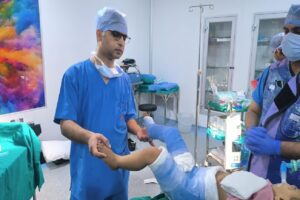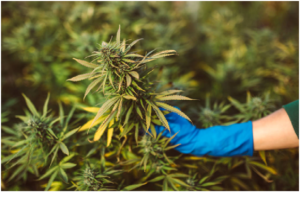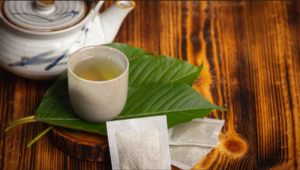pain management Health and Human Services

Pain harms a person’s health physically, emotionally and spiritually. As such, relief is essential for improving people’s quality of life, especially non-pharmacological pain management techniques. At some point in life, virtually everyone experiences some type of pain. Now more than ever, recurrent pain symptoms are becoming a serious health issue.
What is pain?
Pain is a signal from the nervous system that something is wrong. It can be a tingling, prickling, stinging, burning, or aching sensation. Soft, sharp or dull, it can come and go or be constant. The pain can be felt in one area of the body, such as the back, abdomen, chest, pelvis, or throughout the body.
Two types of pain:
Acute pain – This type of pain occurs suddenly due to illness, accident or inflammation. It’s usually easy to treat and goes away as the body heals, but sometimes it can turn into chronic pain.
Chronic pain – A type of pain that lasts a long time, sometimes classified as cancer-related pain and not malignant, such
The dangers of drugsication for pain relief, especially when used for long-term pain management. This is the case for people suffering from arthritis, tendinitis, cancer and chronic migraines. But the ordinary patient is not exempt from risk. Even over-the-counter medications, when used for an extended period of time, can have side effects.
First, drugs can interact with each other, meaning a pain reliever can influence something an individual is taking for a different reason. Second, drugs carry other health risks such as psychosis, ulcers and depression. Finally, many people become addicted to them after using them for long periods of time or for a persistent and excruciatingly painful condition.
Given this and the opioid crisis, many patients and physicians are rethinking their pain medication prescriptions.
Rethinking pain relief prescriptions
As a practitioner, you already know the downsides of opioids and other painkillers. Unfortunately, it is not always practical to recommend different methods that may be less invasive for a suffering patient. Nevertheless, the importance of non-pharmacological pain management is worth considering, especially for those who have lived with pain for a long time.
RELATED: How to create a healthy diet for patients
Drugs, especially opioids, are high-risk medications that can cause respiratory depression, abuse, and dependence in patients. In addition, more patients suffer from comorbidities and the likelihood of experiencing the effects of medications is greater. Globally, healthcare institutions are reassessing their processes and procedures, and you should too.
Pain management without drugs
When creating a personalized pain management plan for your patient, it is essential to use a systematic approach to controlling all aspects of the patient’s pain while focusing on symptom reduction. Non-pharmacological therapeutic alternatives eliminate the need for drugs or, at the very least, reduce the recommended dosage. In this way, you can reduce the effects and the risk of abuse in your patients.
What is non-pharmacological pain management?
It is pain management without the use of pharmaceuticals/medications. This strategy uses techniques that alter your patients’ thoughts and sharpen their focus. Some aspects have been explored in depth over the past 20-30 years, while others are new. More so, some have been around for centuries and are only now being scientifically studied.
In this situation, a doctor can explain each step in detail, using simple illustrations where appropriate, make himself available to a patient to answer questions, and show him the medical rooms. Finally, you can inform your patients of the
To control negative thoughts and behavior problems, psychotherapy (talk therapy) uses talking, active listening , and
Distraction is also commonly used with children, especially infants. Preschoolers can be distracted by using colorful and moving objects, singing songs, telling stories, or watching books or movies. Adults and older children find watching television or listening to music beneficial. Remember to use it when needed, not as a substitute for an explanation.
Meditation is a mind-body technique for focusing your attention on something specific, such as an object, word, phrase, or breath. It helps to reduce bothersome or unpleasant thoughts or feelings.
It involves applying a modest electrical current to your nerves or muscles using a gadget. By disrupting or blocking pain impulses, this stimulation can help with pain resolution.
Massage therapy involves kneading, rubbing, tapping and stroking the soft tissues of the body. This can, among other things, help people relax and relieve tension and pain.
It involves heat, cold, exercise, massage and manipulative therapies. These can help with pain management, muscle conditioning and strength restoration.
relaxation therapy
It can reduce muscle tension and stress effects on the body and lower blood pressure. This might involve tensing and relaxing muscles all over the body.
Acupuncture
Acupuncture stimulates specific areas of your patient’s body called acupuncture points. The most common method is to insert tiny needles into the skin. Pressure, electrical stimulation, and heat are some of the other options





